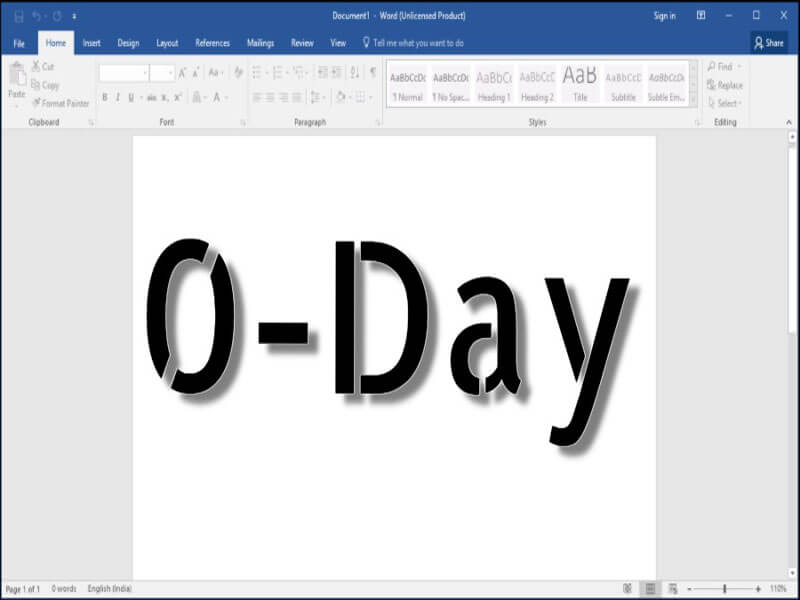It is 2017, and opening a simple document file may compromise your system! We are witnessing an ongoing multi-phase ransomware attack all around the world. It may get even worse!
A zero-day vulnerability refers to a hole in software that is unknown to the vendor. This security hole is then exploited by hackers before the vendor becomes aware and hurries to fix it—this exploit is called a zero-day attack. Zero-day exploit is a regular incidents these days.

Zero Day Vulnerability in Word
During the last month (April) InfoSec researchers issued warning on a new in-the-wild assault that silently installs malware on absolutely-patched computers by way of exploiting a severe — and yet unpatched — 0-day vulnerability in all contemporary variations of Microsoft workplace on fully-patched computers.
The Microsoft office 0-day assault, exposed by way of researchers from security companies McAfee and FireEye, starts off-evolved without a doubt with an email that attaches a malicious phrase record containing a booby-trapped OLE2link object.
When opened, the take advantage of code gets finished and makes a connection to a far flung server managed via the attacker, from wherein it downloads a malicious HTML utility report (HTA) that is disguised as a record created in Microsoft’s RTF (rich textual content format). The HTA report then receives performed robotically with attackers gaining complete code execution on the victim’s system, downloading additional payloads from “exclusive famous malware households” to take over the sufferer’s pc, and closing the weaponized phrase document.in step with researchers, this 0-day attack is extreme as it gives the attackers the energy to bypass maximum take advantage of mitigations evolved by using Microsoft, and not like past phrase exploits visible within the wild, it does not require victims to allow Macros.
Due to those competencies, this newly determined attack works on all windows working structures even towards home windows 10, which is thought to be Microsoft’s maximum comfy operating system thus far.
Besides this, the take advantage of presentations a decoy phrase report for the sufferers to look before terminating a good way to disguise any signal of the attack.
“The successful exploit closes the bait phrase report and pops up a faux one to expose the sufferer,” McAfee researchers wrote in a weblog submit posted Friday. “within the heritage, the malware has already been stealthily set up on the victim’s system.”
“the root cause of the 0-day vulnerability is associated with the windows item Linking and Embedding (OLE), an vital characteristic of workplace.”
Microsoft is aware of the 0-day flaw as the researchers say they responsibly disclosed the issue to the business enterprise after detecting energetic attacks leveraging this unpatched flaw back in January this yr.FireEye disclosed the details of the vulnerability a day after McAfee went public with the flaw.
Unless we are properly ready to handle this type of threats, we will regularly see different types of cyber attacks. Wanna Cry is a big example for these sort of attacks.
The biggest risk of zero-day attack is it can be activated remotely by the hacker without giving any time to the user.
Since the attack works on absolutely patched systems, users are pretty suggested to comply with the under hints to mitigate such attacks:
Beware of this attack.
Keep up to date with our blog.